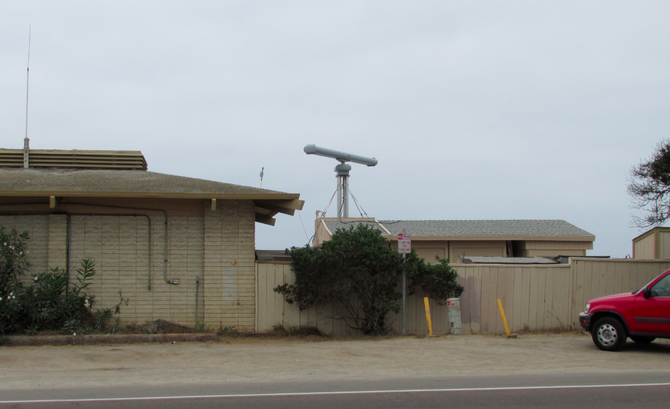 Facebook
Facebook
 X
X
 Instagram
Instagram
 TikTok
TikTok
 Youtube
Youtube

Motorists in the South Carlsbad area, driving along the coast highway (Carlsbad Blvd.), may have wondered what’s up with the new 12-foot rotating blade at the south end of the South Carlsbad State Beach campground. The new radar technology may have finally caught up with sea-level bad guys.
Since 2007, when the San Ysidro area border became completely sealed from the ocean to five miles east, traffickers needed to find other ways to sneak their human and drug cargo into the U.S. One of the ways was to go offshore.
Less populated than the San Diego or Orange County shoreline, the North County coastline has become the pre-dawn landing beach of choice of smugglers operating stolen Mexican fishing boats. Known as pangas, the number of boats found unattended, stranded, or caught coming ashore has risen dramatically in the past several years.
A few years ago, U.S. Customs and Border Protection agents scoured coastal area businesses that had a clear view of the ocean in Cardiff-by-the-Sea and Del Mar, posting flyers that encouraged citizens to report suspicious activity. The beach landings have continued to increase, roughly one every few weeks.
The boats, traveling north, will sometimes go as far out as 25 miles offshore in an attempt to evade Coast Guard detection. The boats are perfect for fishing in Baja, but not for the open ocean. When a panga — which tends to have a small outboard engine — becomes stranded, the smugglers usually abandon their cargo. People sometimes float around for days until they’re found by passing ships.
CBP, an agency within Homeland Security, placed the radar installation in the campground. It became operational — as in started spinning around and attracting motorists' attention — in late August. It is designed to use newer technology to cast a 15-mile-radius radar shadow from the point of La Jolla, north to Camp Pendleton. Radar images are monitored by Homeland Security personnel stationed at a facility in the Inland Empire.


Motorists in the South Carlsbad area, driving along the coast highway (Carlsbad Blvd.), may have wondered what’s up with the new 12-foot rotating blade at the south end of the South Carlsbad State Beach campground. The new radar technology may have finally caught up with sea-level bad guys.
Since 2007, when the San Ysidro area border became completely sealed from the ocean to five miles east, traffickers needed to find other ways to sneak their human and drug cargo into the U.S. One of the ways was to go offshore.
Less populated than the San Diego or Orange County shoreline, the North County coastline has become the pre-dawn landing beach of choice of smugglers operating stolen Mexican fishing boats. Known as pangas, the number of boats found unattended, stranded, or caught coming ashore has risen dramatically in the past several years.
A few years ago, U.S. Customs and Border Protection agents scoured coastal area businesses that had a clear view of the ocean in Cardiff-by-the-Sea and Del Mar, posting flyers that encouraged citizens to report suspicious activity. The beach landings have continued to increase, roughly one every few weeks.
The boats, traveling north, will sometimes go as far out as 25 miles offshore in an attempt to evade Coast Guard detection. The boats are perfect for fishing in Baja, but not for the open ocean. When a panga — which tends to have a small outboard engine — becomes stranded, the smugglers usually abandon their cargo. People sometimes float around for days until they’re found by passing ships.
CBP, an agency within Homeland Security, placed the radar installation in the campground. It became operational — as in started spinning around and attracting motorists' attention — in late August. It is designed to use newer technology to cast a 15-mile-radius radar shadow from the point of La Jolla, north to Camp Pendleton. Radar images are monitored by Homeland Security personnel stationed at a facility in the Inland Empire.
Comments